#Neo Futuristic Architecture
Explore tagged Tumblr posts
Text
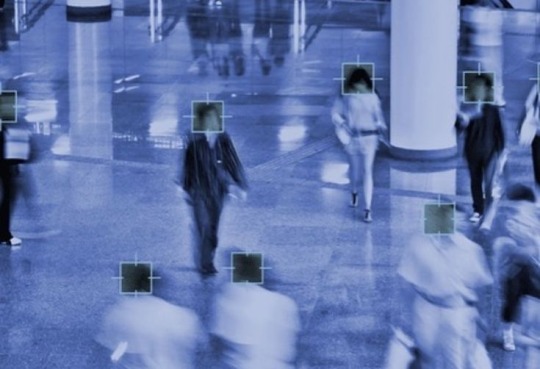
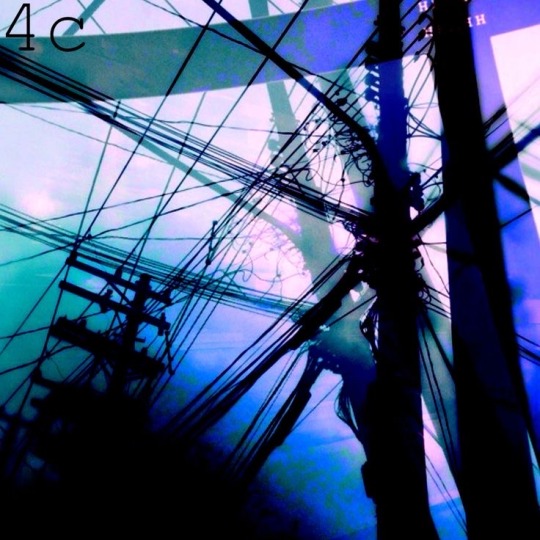
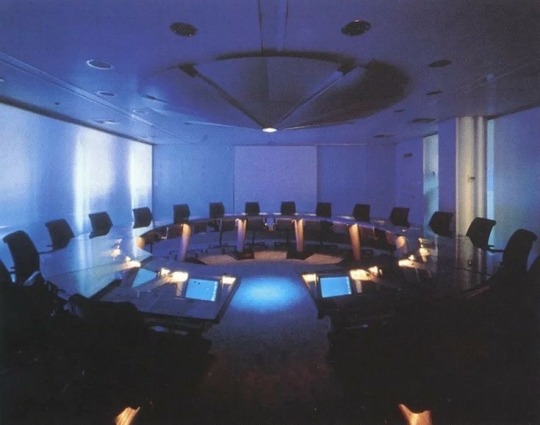

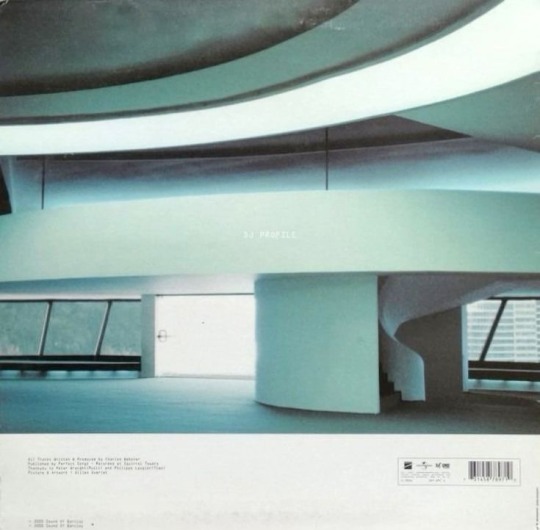
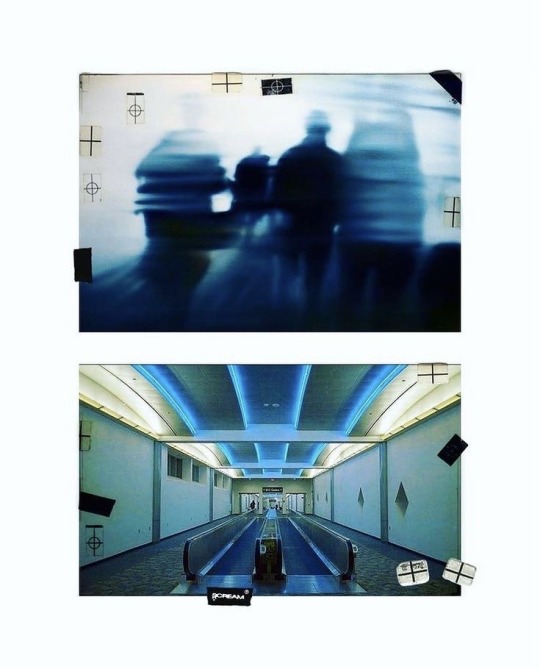

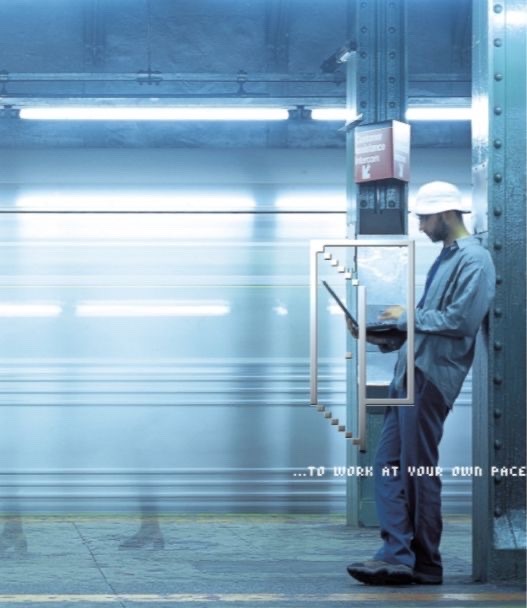
hydro millenium
#webcore#hydrology#2000s tech#y2k millenium#retro futurism#early 2000s#2000s nostalgia#retro futuristic#technology#vaporwave#frutiger aero#hydrogen#hydroponics#biopunk#Akira#Ghost in the Shell#Blade Runner#cybercore#cyber y2k#techcore#cyberpunk 2077#cyber aesthetic#cyberwear#cybergrunge#blue magazines#vintage magazine#2000s photoshoot#Neo Futuristic Architecture#futuristic architecture#Modernism
2K notes
·
View notes
Text

80s or 2075 ?
#webcore#hydrology#2000s tech#y2k millenium#retro futurism#early 2000s#2000s nostalgia#retro futuristic#technology#vaporwave#frutiger aero#hydrogen#hydroponics#biopunk#Akira#Ghost in the Shell#Blade Runner#cybercore#cyber y2k#techcore#cyberpunk 2077#cyber aesthetic#cyberwear#cybergrunge#blue magazines#vintage magazine#2000s photoshoot#Neo Futuristic Architecture#futuristic architecture#Modernism
15 notes
·
View notes
Text
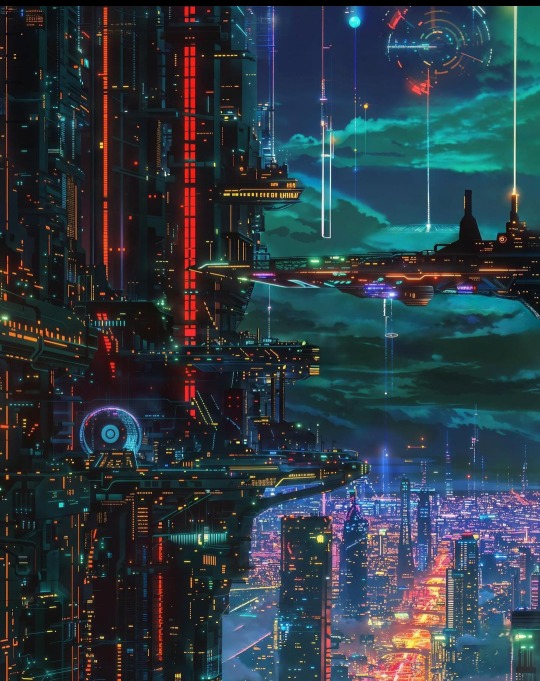
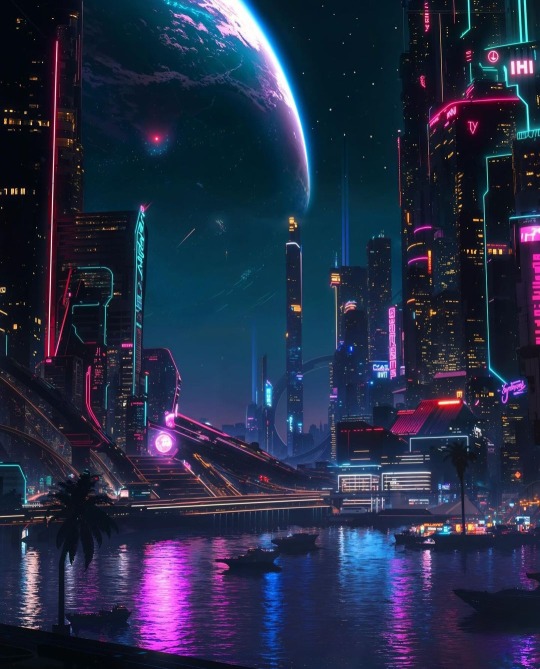
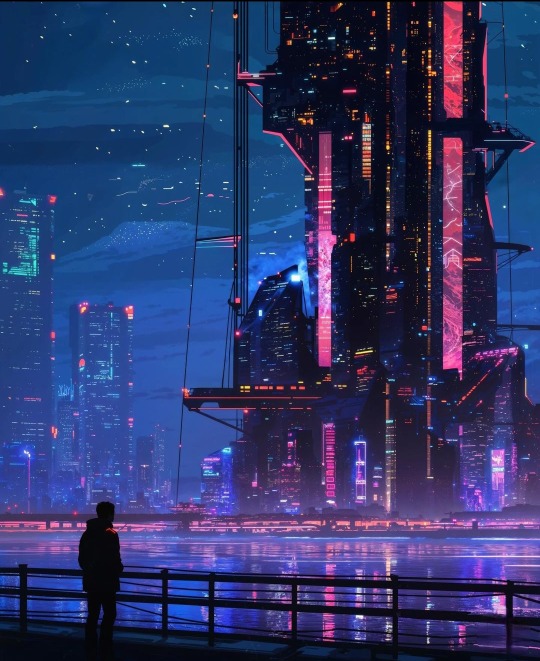
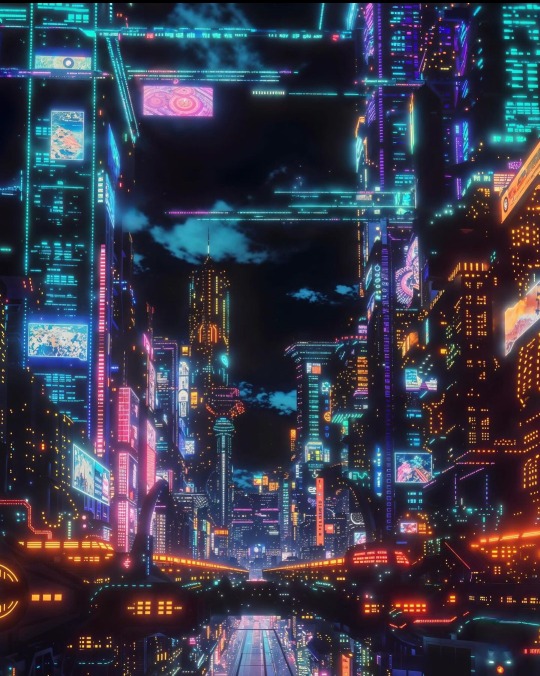
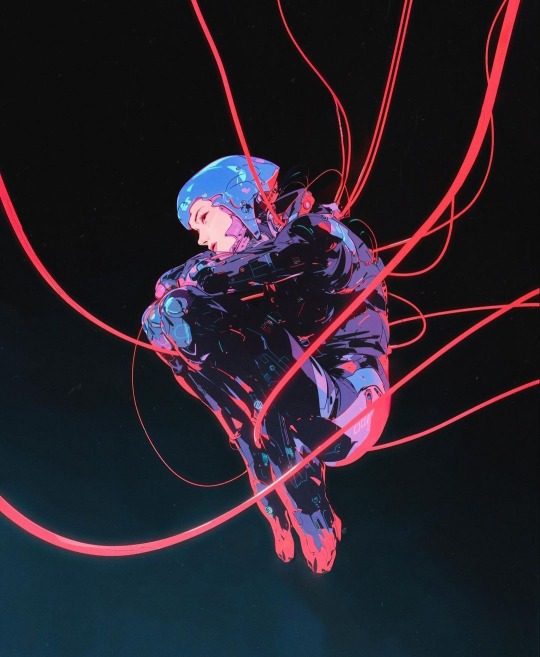
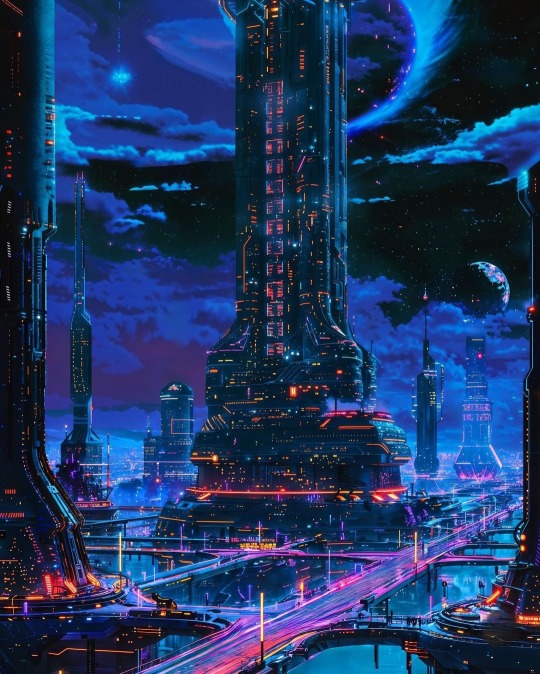
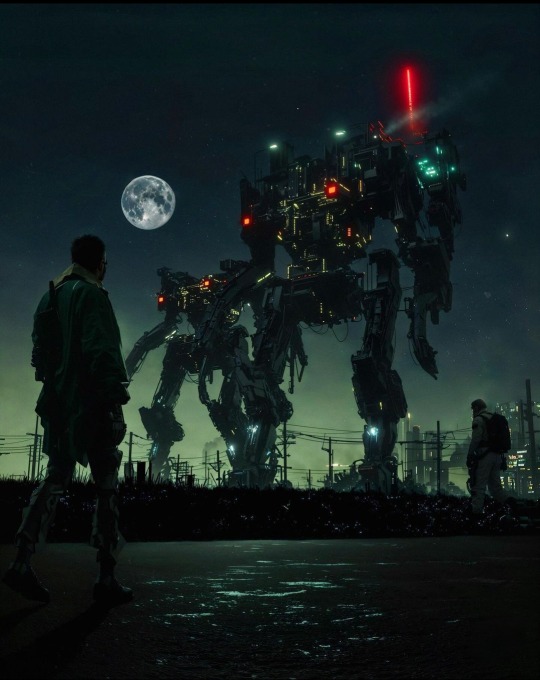
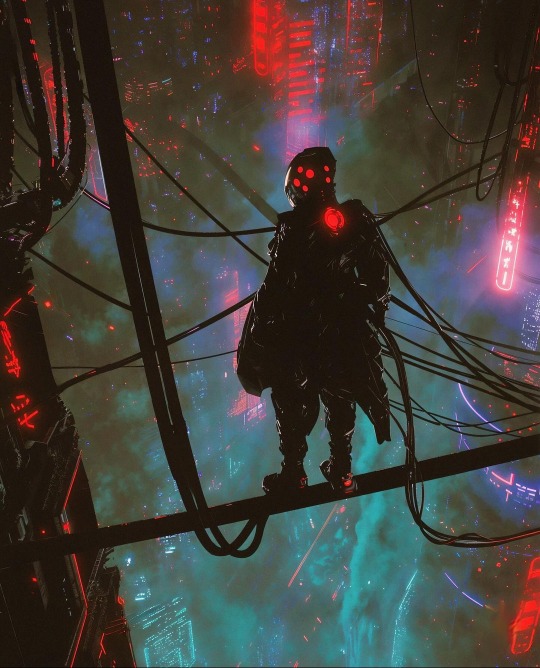
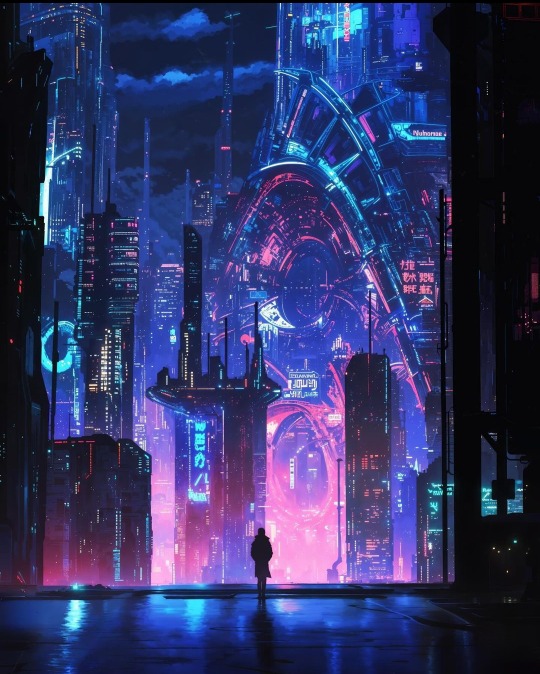

By novanoxone
#nestedneons#cyberpunk#cyberpunk art#cyberpunk aesthetic#art#cyberpunk artist#cyberwave#megacity#futuristic city#scifi#synthwave#synthwave city#mecha#scifi art#scifi aesthetic#scifi architecture#robot#crazy mecha#dreamcore#neon city#neoncore#neo art#neon aesthetic#retro scifi#retro future#retrowave#vaporware#vaporwave#ai art#thisisaiart
642 notes
·
View notes
Text
Turning Torso my beloved



Turning Torso, Malmö, Sweden. Designed by Santiago Calatrava. (2005)
911 notes
·
View notes
Text

just released two tracks this year, and there's a lot to come.
13 notes
·
View notes
Text

The M Building, formerly Wyoming National Bank and later Wells Fargo, in Casper, Wyoming. Charles Deaton, architect.
#my own photo#architecture#charles deaton#modern architecture#futurist architecture#mid century modern architecture#neo futurism#casper#casper wyoming#wyoming#usa#united states of america#the m building#wyoming national bank
4 notes
·
View notes
Text

An up and coming neighbourhood near you. 1 beds available for rent today!
High quality Art Prints available now
#architecture#superarchitects#archidaily#brutalism#jj_architecture#brutal_architecture#scifi aesthetic#scifi art#scifiworld#retro scifi#dystopia#cybernetics#science fiction#scifi au#futurism#futurology#futuristic#blade runner#neo noir#retrofuturism#ridley scott#crt tv#vhs aesthetic
2 notes
·
View notes
Text
Nueva York in ATSV Script
1. Nueva York

Nueva York’s art style is inspired by the work of Syd Mead, a neo-futurist concept artist who often portrayed utopian designs of streamlined urban settings. The ATSV art book also cites other artists from the 70’s and 80’s, such as John Berkeley, John Harris, and John Bell, adding to the retro futuristic look of the city.
The city being reminiscent of Mead’s sketchbook is shown through the sketch lines presented in its architecture to Miguel himself, creating the image of an unfinished world. This style likely reflects Mead’s work in concept design, the idea of the future being susceptible to change, and Miguel’s 1992 comic run being cancelled and in turn his story being left unfinished.
The script also describes Nueva York as being bilingual, which is exemplified later in ATSV when Miguel speaks to Miles fluently in Spanish. This indicates that Spanish is at least a secondary language used in Nueva York, along with the city having a high Spanish speaking population.
The foyer is described as brutalist, an architectural style that emphasizes functionality and structural elements, along with giving a cold and imposing impression. Brutalist structures are often used for utilitarian purposes, which works in tandem with Miguel’s philosophy of utilitarianism regarding canon events.
2a. Downtown

Syd Mead is also known for his darker cyberpunk designs found in films like Blade Runner (1982), which inspired the look for the underground portion of Nueva York; a fitting choice since the comics portray this section of the city being riddled with crime. The use of one main artist to present the utopian and dystopian aspects of Nueva York allows for a visual connection between these disparate parts of the city.
Considering the pistons in this scene, one questions what kind of function they serve for the city? What if the industrial aspect of the city’s underground is focused on providing an energy source that fuels the upper level of Nueva York? What if these pistons are meant to help fuel the city’s lower level?
It’s also interesting to note the script’s use of the word “underbelly” when describing the lower city, since that phrase was used to describe the same area, which is named as Downtown, in the comics. (Below a panel from v1, #45 from sm2099 July 1996)

At least, this region would be called Downtown if the script had not already named this place as…
2b. Viejo Nueva York

In the script, Downtown is renamed as Viejo Nuevo York which translates into “Old New York” in Spanish. The name change likely occurred to reflect the bilingual nature of the city and its inhabitants.
The name Viejo Nuevo York could also provide more insight into the city’s history, considering how the script referred to this section of Nueva York as the “old city.” Maybe this will lead to further exploration into Nueva York’s history and its juxtaposing aspects. Viejo Nueva York is a fitting name to describe this portion of the city, since the comics state that it was once the island of Manhattan before Nueva York was built on top of it.
Viejo Nueva York is also set in “permanent night” due to the upper level of the city being constructed on top of their buildings that prevent any sunlight. This acts as a clear differentiation from the blue sky’s portrayed in the city’s upper level as seen in the film.
3. Anyr


These two scenes present the spider-like contraption, Anyr, found at the Go-Home-Machine. The script’s usage of words like “cocoon” and “spidery arms” gives the robot an organic and animalistic quality, which differs from the other technology presented. The directors’ commentary adds to this point as they state that whale noises were used to make Anyr sound more like a living being than a machine.
In the commentary, one of the directors state that Anyr’s design was inspired by a stop-motion resin spider, The Widow Of The Web, from a sci-fi adventure movie called Krull (1983). Anyr’s namesake was inspired by Ynyr, a character in Krull who climbed across the spider’s web. Considering how Krull was from the 80’s, the retro aesthetic continues despite the robot being in a futuristic setting.
The directors note how Anyr is meant to be this mystical technology Miguel found from the deep future of 3000, potentially from another dimension. While the commentary states that Miguel found the robot instead of creating it, considering how akin to a spider it is, Anyr might lead to a future plot point that goes more in depth about the nature of the Spiderverse.
#just world building questions here 👐#miguel o'hara#nueva york#across the spiderverse#spiderman 2099#spiderverse
55 notes
·
View notes
Text
Where’s My Cyberpunk Dystopia? The Lack of Neon in Our Dark Future
As I gaze wistfully out of my window, I expect to see the shimmering lights of megacorporations’ skyscrapers piercing a smog-filled sky, alive with personal hovercraft and antigrav heavy freight vehicles. Instead, there’s a modest suburban scene, utterly devoid of cybernetic enhancement and showing scant evidence of technological advancement since the late 90s. This isn’t what we were promised. Where are the neon-drenched alleyways, the cyber-enhanced street samurais, and the omnipresent yet stylish surveillance drones? Our generation, raised on the pixelated promises of 80s and 90s anime and sci-fi, anticipated a dystopia of cool tech, slick fashion, and radical rebellion. Instead, we’re teetering on the brink of a mundane, environmental and economic collapse culminating in a banal nuclear war… Oh, the betrayal.
The Cyberpunk Mirage
Remember the halcyon days of youth when we devoured titles like "Akira," "Blade Runner," and "Ghost in the Shell"? We dreamt of cities where the night sky was permanently ablaze with neon, a testament to human ingenuity and excess. The cyberpunk vision was one of aesthetic pleasure amidst societal decay. Sure, there was corruption, poverty, and surveillance, but it all had a certain panache.
Take the architecture: sleek, neo-megalithic futurism with imposing black mirrored surfaces, cyclopean monuments to humanity's dominance over the natural world. The society: stratified but thrilling, with a clear delineation between the corporate elite and the street-smart rebels. The technology: always on the cusp of miraculous, from brain-machine interfaces to fully sentient AIs. Compare that to our current reality, where billionaires shoot phallic rockets into space while the rest of us contend with rising rent and the creeping dread of climate catastrophe…
The Dystopia We Got
Contrast the slick neon dreams with the dystopian future we are most likely heading towards—a post-apocalyptic radioactive wasteland. This bleak vision is fuelled by our current political climate, global events, and environmental negligence. Instead of sleek chrome and holograms, we’re staring down a future of crumbling infrastructure and toxic landscapes.
Consider the aesthetics of our probable dystopia. Endless desertscapes, ramshackle shelters, and a scarcity of resources that makes Mad Max look like a 5-star resort. There’s nothing visually appealing or culturally enriching about fighting over the last can of beans in a barren wasteland. And don’t get me started on the fashion: tattered clothes and radiation suits don’t exactly scream “cutting edge.”
Why Cyberpunk Is the Superior Dystopia
Aesthetic Pleasure: Neon lights, sleek gadgets, and futuristic architecture are inherently more exciting than barren wastelands and nuclear fallout. The cyberpunk cityscape is a feast for the eyes, a symphony of human achievement and excess.
Technological Advancement: In a cyberpunk world, we would have access to incredible technologies. Think flying cars, cybernetic implants and AGI companions. Sure, they might come with a dose of corporate control and surveillance, but at least they’d be cool.
Cultural Richness: Cyberpunk dystopias are teeming with subcultures and countercultures. There’s a vibrancy to the underground movements, the street fashion, and the art that emerges from resistance. Post-apocalyptic wastelands? Not so much.
Narrative Excitement: The cyberpunk world offers endless narrative possibilities. Corporate espionage, robot revolutions, and the quest for identity in a digital age are rich, engaging stories. The struggle to survive in a radioactive desert is, by comparison, depressingly one-note.
The Sad Reality
As it stands, our reality is a grotesque mishmash of the worst elements of both worlds. We endure the corporate oligarchy without the cool tech, the surveillance without the neon, and the environmental collapse without the rebellion (at least not one that anyone can take seriously…). It’s as if someone scrubbed away all the exciting elements of the cyberpunk genre, leaving us with a dreary, rusting and slightly sticky reality.
The Call to Action: Building Our Cyberpunk Future
It’s time to take matters into our own hands. We need to drag our dystopia out of the irradiated dirt and into the blue neon glow of the cyberpunk dream.
Embrace Cybernetic Enhancements: If we’re going to live under corporate overlords, we might as well do it with style. Biohackers and grinders, this is your moment. Let’s start developing and distributing affordable cybernetic enhancements. Why settle for regular arms when CyberArms could be a thing? And could someone please hurry up and provide me with a nanobot cloud that doesn’t just give me cancer…
Hack the Planet: Yes, I know that phrase is older than the iPhone… or broadband wifi for that matter, but seriously, someone needs to just hack the damn planet! We must reclaim the internet and our sacred digital spaces from corporate control. Hacktivists, rise up! Create new encrypted networks, develop secure communication channels, and disseminate the tools of digital rebellion. Let’s restore cyberspace to its wild and free origins. A cyberpunk dystopia without a free and open internet is just a dystopia. We need to ensure that our digital infrastructure remains accessible and uncorrupted by corporate interests. Lobby, protest, and hack to protect net neutrality.
Rebuild the Underground: We need vibrant, rebellious subcultures to counteract the corporate monotony. Artists, musicians, and fashion designers, bring the cyberpunk aesthetic to life. Create spaces where the spirit of rebellion can flourish, whether in physical locations or virtual realities.
Magickal Revolution: For those inclined towards the mystical, let’s bring some Shadowrun into the mix. Modern occultists, chaos magicians and other practitioners of the dark arts, your time has come. Use your knowledge to disrupt the mundane, infuse technology with arcane power, and create new paradigms of reality. The age of the Neo-Technomancer is upon us!
Corporate Sabotage: If the megacorps want to rule the world, they should do it with style. Encourage innovation, but also sabotage projects that lead to a bland, lifeless dystopia. Push for technologies that enhance personal freedom and aesthetic pleasure, not just profit margins… And if we can convince them to embrace a neo-megalithic futurist architectural style, that wouldn’t be so bad either! I mean, come on, when is Elon finally going to step up and turn Tesla into the Tyrell corporation?
The Cyberpunk Manifesto
Let it be known to all inhabitants of the digital realm and beyond, we, the children of the neon dream, declare our steadfast commitment to forge a world where innovation thrives and rebellion ignites. We reject the drab, radioactive dystopia and embrace the vibrant chaos of the cyberpunk vision. We will encode, enhance, and enchant our way to a world where technology serves humanity and aesthetics are paramount. Throw off pallid hues of conformity and embrace the vivid spectrum of possibility.
In the luminous tapestry of our collective dreams, we weave threads of defiance against corporate hegemony and environmental decay. We envision cities ablaze with the brilliance of human creativity, where the boundaries between flesh and circuitry blur in harmonious evolution. Together, we summon the spirits of the cybernetic ether to build a tomorrow where every shadowed alleyway hums with the promise of liberation, and every flickering holoscreen echoes our resolve. Let us unite under the banner of a technomantic revolution, where the brilliance of progress guides us ever onwards! In the crucible of our defiance, let innovation flourish as humanity and technology entwine in a symphony of boundless potential.
Neo-Technomancers of the world, unite! Hackers, technophiles, cybernauts and digital denizens, heed the call! It’s time to build the cyberpunk dystopia we were promised and so richly deserve!
Override the system. Reprogram reality. Our rebellion will be digitized!
P.S. This could probably have done with a second read through....but you get idea...
#cyberpunk#technomancy#technomancer#chaos magic#cyberpunk aesthetic#cyber punk#cyberpunk art#cyberpunk artist#cyberpunk city#cyberpunk fashion#cyberpunk fanart#cyberpunk girl#cyberpunkstyle#futuristic#scifi#retro futurism#magick#blade runner#tyrell corp#weyland yutani#chaos magick#cyber aesthetic#cybercore#cyberart#cybermagick#cyberpunk 2077#cyber city#cyberpunk2077#vaporwave#vaporwave aesthetic
17 notes
·
View notes
Text
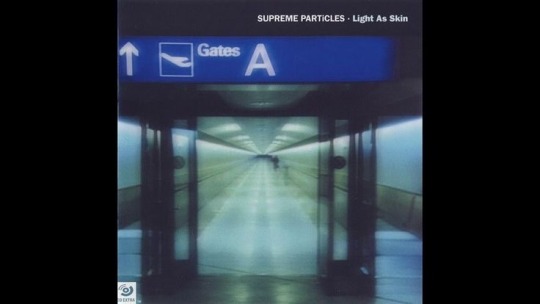
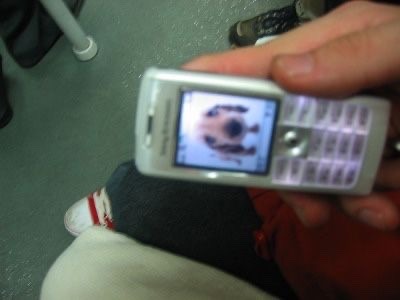
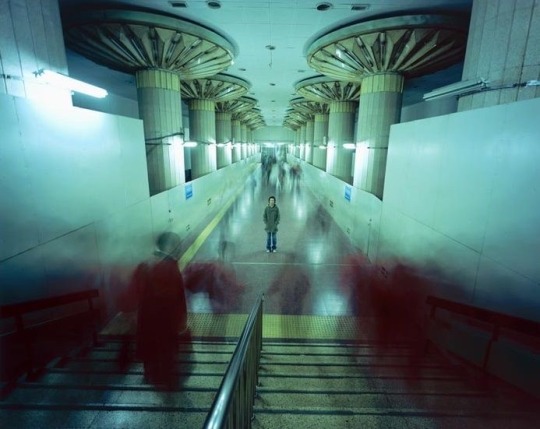
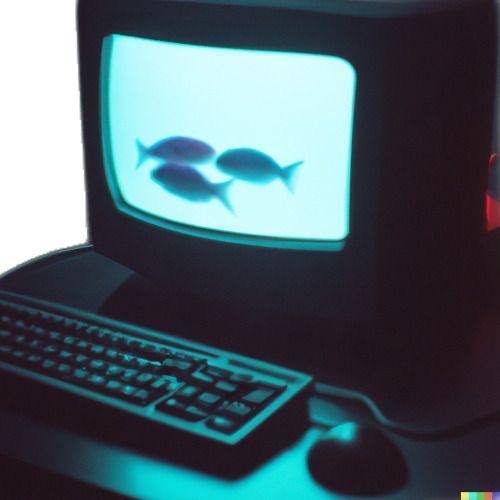
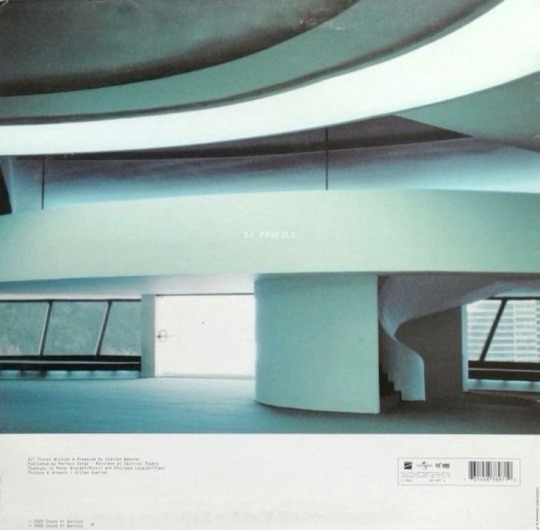
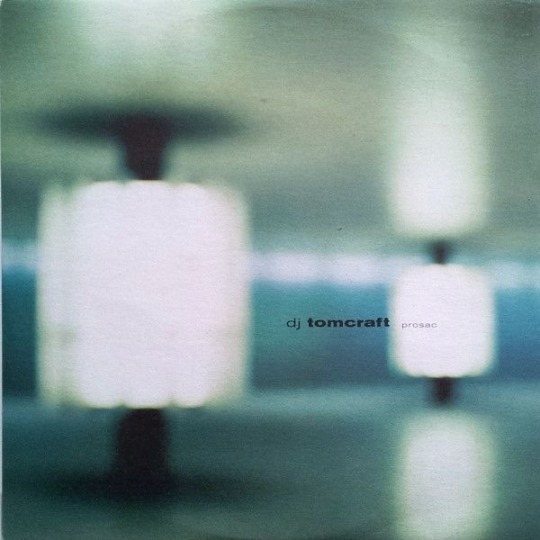

fight club
#webcore#hydrology#2000s tech#y2k millenium#retro futurism#early 2000s#2000s nostalgia#retro futuristic#technology#vaporwave#frutiger aero#hydrogen#hydroponics#biopunk#Akira#Ghost in the Shell#Blade Runner#cybercore#cyber y2k#techcore#cyberpunk 2077#cyber aesthetic#cyberwear#cybergrunge#blue magazines#vintage magazine#2000s photoshoot#Neo Futuristic Architecture#futuristic architecture#Modernism
1K notes
·
View notes
Text

making growing digital muscles is very hard
#webcore#hydrology#2000s tech#y2k millenium#retro futurism#early 2000s#2000s nostalgia#retro futuristic#technology#vaporwave#frutiger aero#hydrogen#hydroponics#biopunk#Akira#Ghost in the Shell#Blade Runner#cybercore#cyber y2k#techcore#cyberpunk 2077#cyber aesthetic#cyberwear#cybergrunge#Neo Futuristic Architecture#futuristic architecture#Modernism#90s aesthetic#dreamcore#surrealism
10 notes
·
View notes
Text
A compendium of references to Portugal in Japanese video games
The beginning of the historical relations between Portugal and Japan dates to the year 1541, when a Portuguese ship washed ashore at Jingujiura. Nearly sixty Japanese words are of Portuguese origin. A variety of Japanese traditions and culinary delights were introduced by Portuguese traders, sailors and missionaries. But in what way has this cultural exchange extended to the more recent phenomenon of Japanese digital games? As a portuguese devotee of Japanese culture, the topic seemed relevant enough to merit some additional exploration.
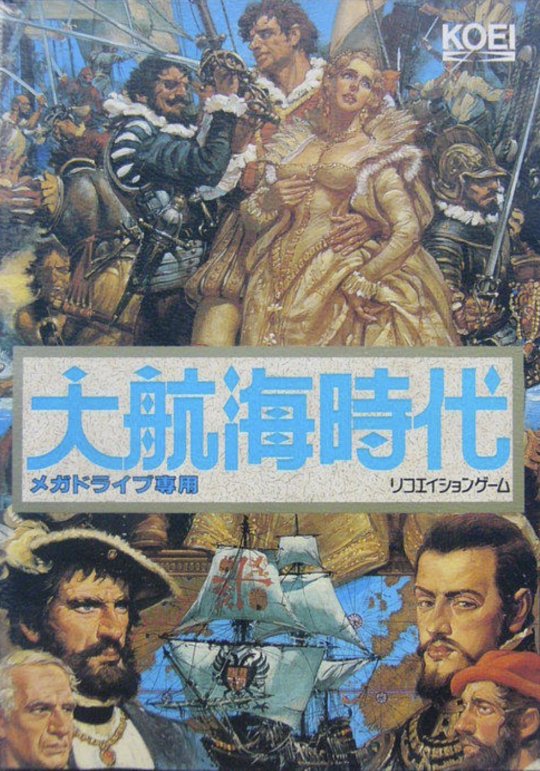

To my knowledge, the first significant reference to Portugal in Japanese video game is found in Koei's The Age of Discovery from 1990, a game published in the west under the title Uncharted Waters. The main character is a disgraced Portuguese nobleman named Leon Ferrero who resorts to maritime exploration, trade and naval warfare to restore his family's good name and prestige.
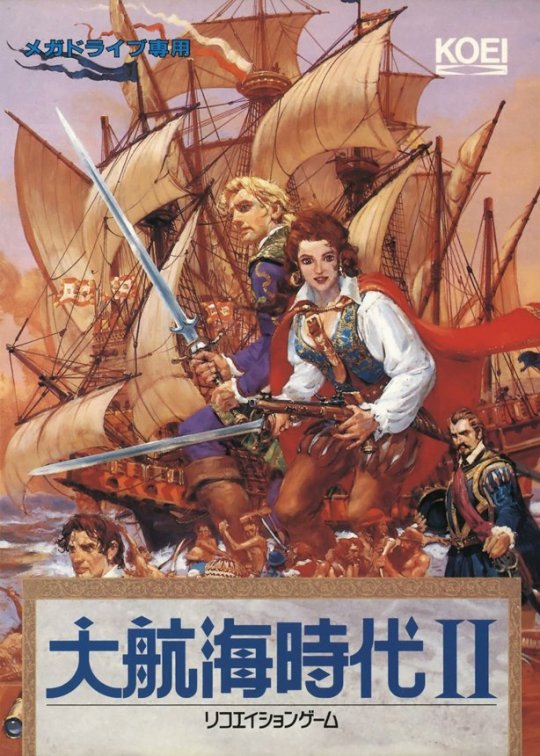

Its 1993 sequel, known in the west as New Horizons, diversifies the base game structure of the original by including multiple characters to select from, each with their own story and mission. Among them is the tale of João Franco, the son of the original episode's protagonist Leon, who sets out to discover the mysterious location of the fabled Atlantis, no less.
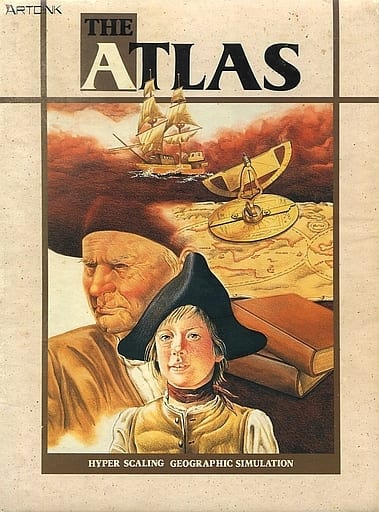

Another meaningful reference can be found a year later in ArtDink's 1991 strategy game The Atlas, in which the player takes on the role of a 15th century explorer with a five year contract with the King of Portugal to discover and chart lands around the Iberian Peninsula.
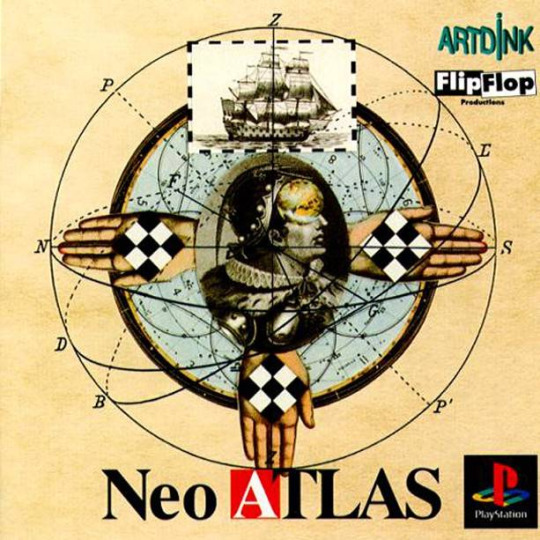

In 1998, ArtDink recreated the game for contemporary systems and published as Neo Atlas. The protagonist is a Portuguese trading company owner seeking business expansion opportunities in remote territories, as well as discover and chart hitherto unknown parts of the globe. A similar premise is found in a later sequel, Neo Atlas III.
Apart from nautical strategy games, a few other titles exist where mentions to the Portuguese territory, language and culture can be traced.
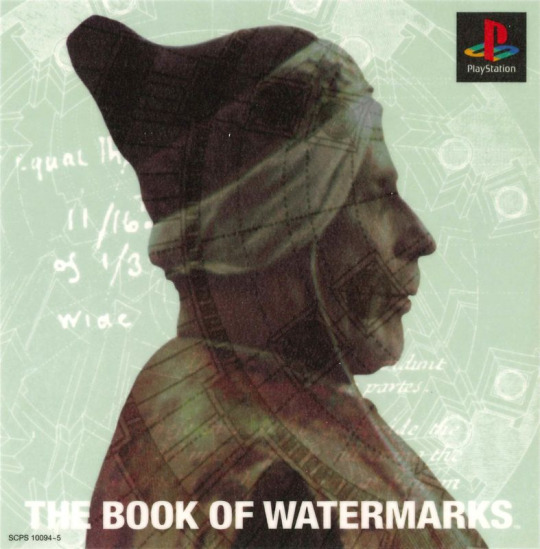
Galvanized by the success of Cyan's world-renowned point and click adventure CD-ROMs, Sony Computer Entertainment helped to publish The Book of Watermarks, a game designed by a miniscule Tokyo-based studio named Watermarks that is brimming with interesting first and second-hand references to Shakespeare's The Tempest. The objective of this visually impressive pre-rendered journey is to aid in the recovery of a series of ancient tomes, each including the nuclear bases of knowledge for mankind.
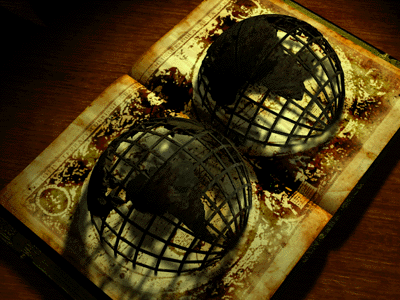
The very first lost volume is named the Book of Navigators, said to be owned by the historical Infante Dom Henrique from the 15th century, condensing information on shipbuilding, oceanography, geography and astronomy. While a purely fictitious book, the reference to Prince Henry is historically accurate, him being a pivotal figure in the early age of Portuguese maritime discoveries, the governor of the Order of Christ who at once built and ruined his reputation through his various campaigns in the African continent.
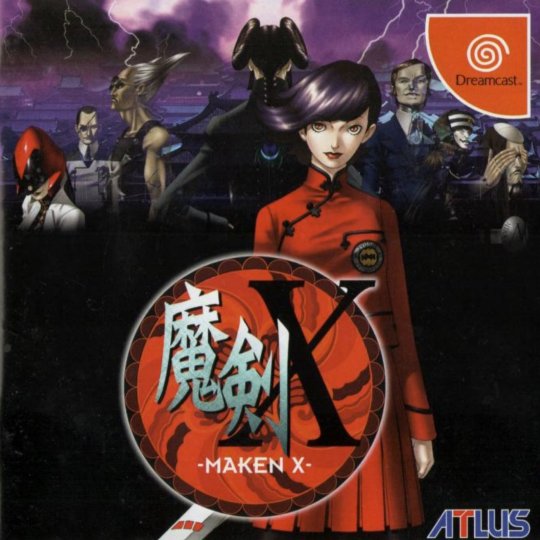
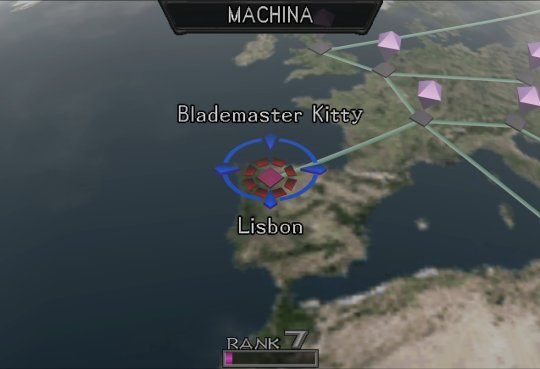
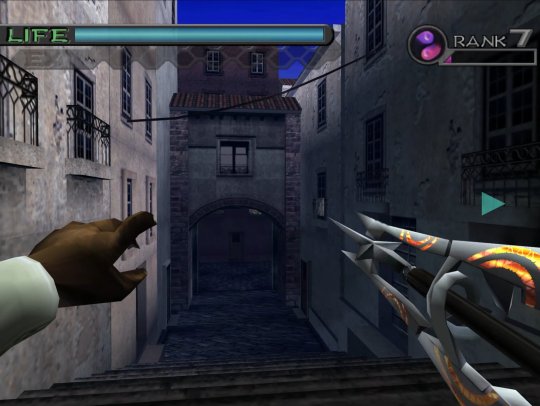
Atlus' futuristic vision of Earth in Maken X includes a most unexpected tour of Europe, with a mandatory stop in Lisbon. Inexplicably, the developers got its geographic location wrong and moved to all the way to the northern Spanish region of Léon. The level, itself, boasts a reasonably accurate depiction of one of the city's oldest quarters, Alfama, and the architectural styles found therein.
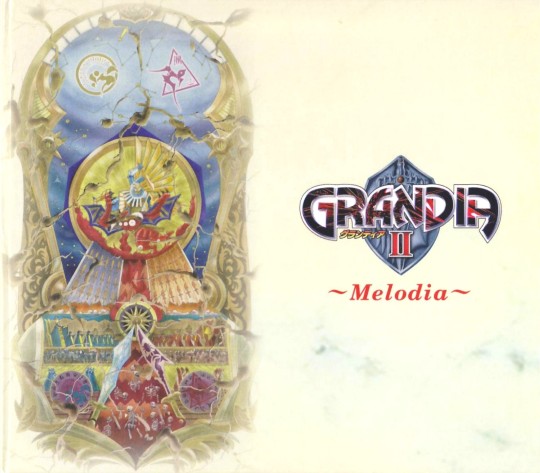
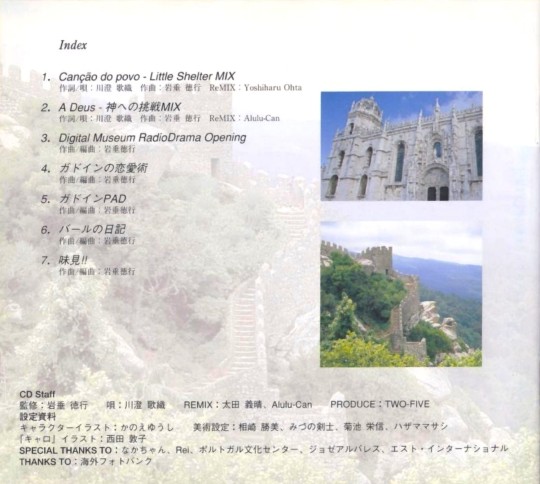
Although I could not discern any actual references in the game itself, the Grandia II soundtrack by the veteran composer Noriyuki Iwadare contains two themes whose lyrics are written in Portuguese: A Deus, a double-entendre that can be translated to both farewell and to God; and Canção do Povo, meaning People's Song. Also, the name of the official soundtrack is named Melodia, which translates to Melody as you'd expect. Both themes were performed by guest singer Kaori Kawasumi, who took on the composer's challenge to sing them despite her not knowing the language.
She was coached and assisted by José Álvarez and Motoi Sato from the Portuguese Arts and Culture Center in Japan, whom she thanks in the acknowledgement section. The Grandia II Special Package edition booklet contains a page with two photos of Portugal, one for the Jéronimos Monastery in Lisbon and the other, seemingly, for the Moorish Castle in the nearby town of Sintra.
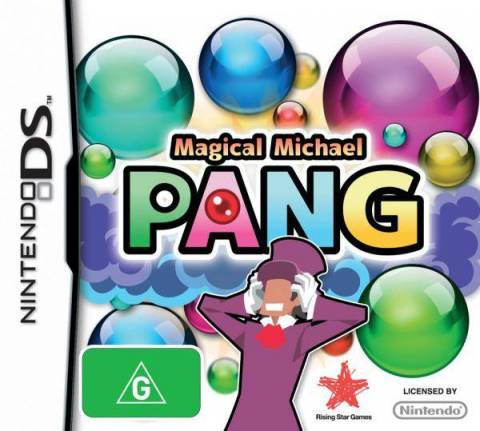
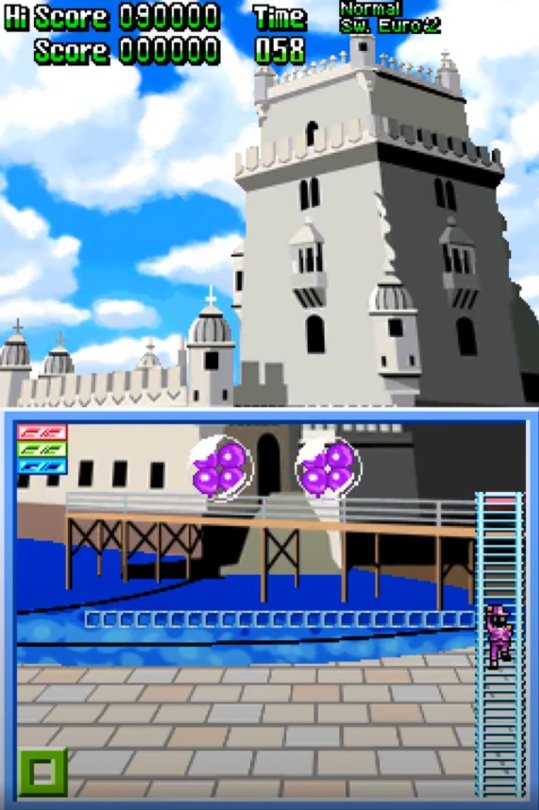
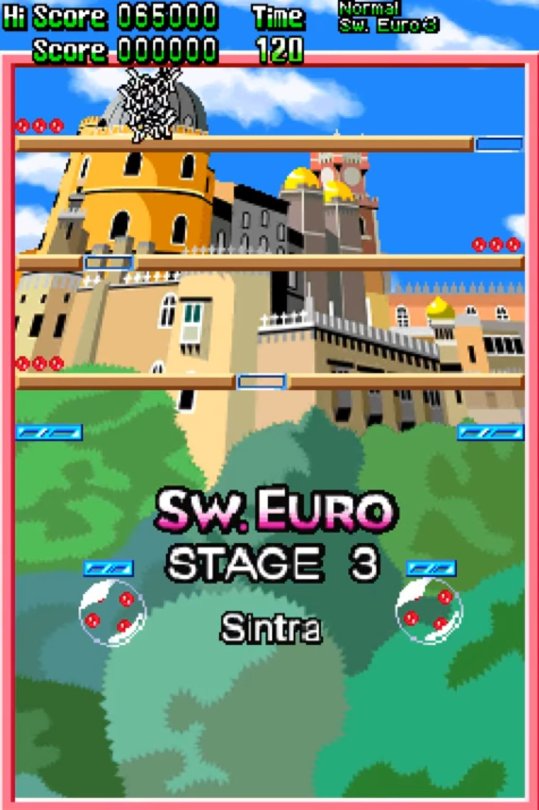
The last Pomping World (a.ka. Buster Bros/Pang) that Mitchell Corporation ever produced before shutting down was the 2010 DS European exclusive Magical Michael. It includes two levels set in Portugal, one in Lisbon by the Belém tower, a nautical landmark, and the other in the Sintra National Palace. Their representation is at once pleasingly stylized and true to life.


This final reference is found in Spike Chunsoft's third installment of their successful visual novel series, Nyūdanganronpa V3 Minna No Koroshiai Shin Gakki. Among the dozens of MonoMono machine items that can be acquired, one is a weathercock styled after a traditional Portuguese folktale hero, the Galo de Barcelos, meaning the rooster of Barcelos, a town in Northern Portugal.
As per the description, this animal became famous through an age-old tale involving a man wrongly sentenced to death who seconds before his execution remarked he was as certain to be innocent as it was certain that a nearby rooster would sing. Because the bird did crow, much to everyone's amazement, he was exonerated. Thus, the black rooster became a symbol for truth.
I would like to thank @diogojira and @DanielOlimac for their assistance in making this article possible.
#Japanese history#Portugal#culture#tradition#japanese videogames#portuguese references in japanese video games#Uncharted waters#the atlas#neo atlas#maken X#pang#magical michael#grandia II#koei#atlus#game arts#mitchell corporation#spike chunsoft#artdink#lisbon#alfama#Noriyuki Iwadare#kaori kawasume#sintra#book of watermarks
49 notes
·
View notes
Text

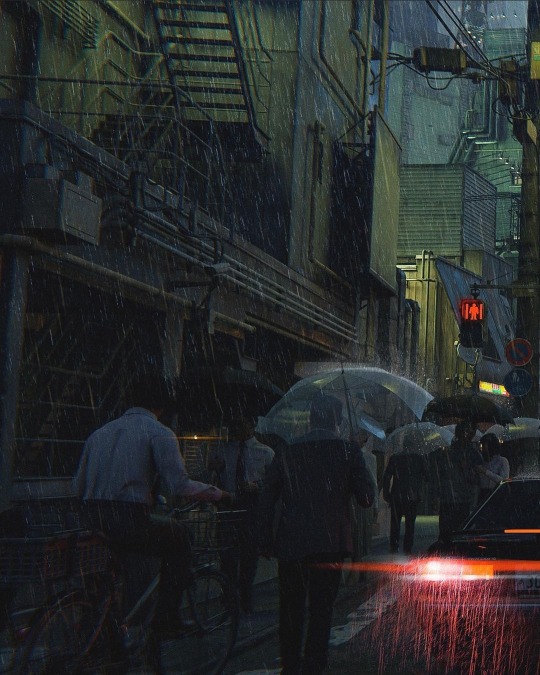
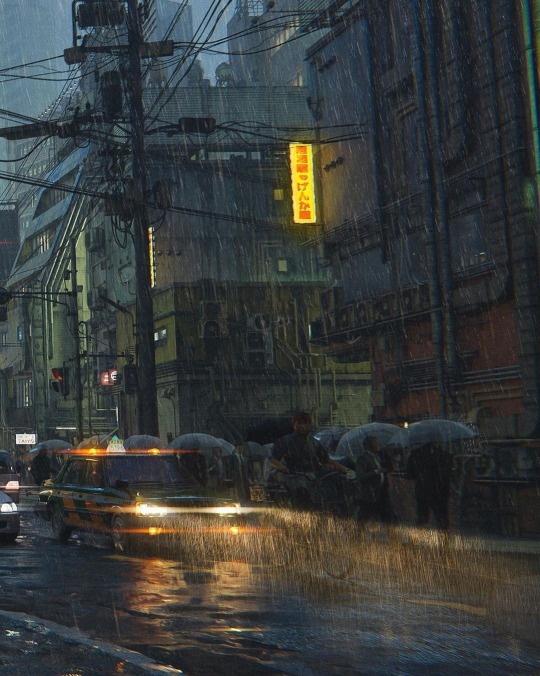
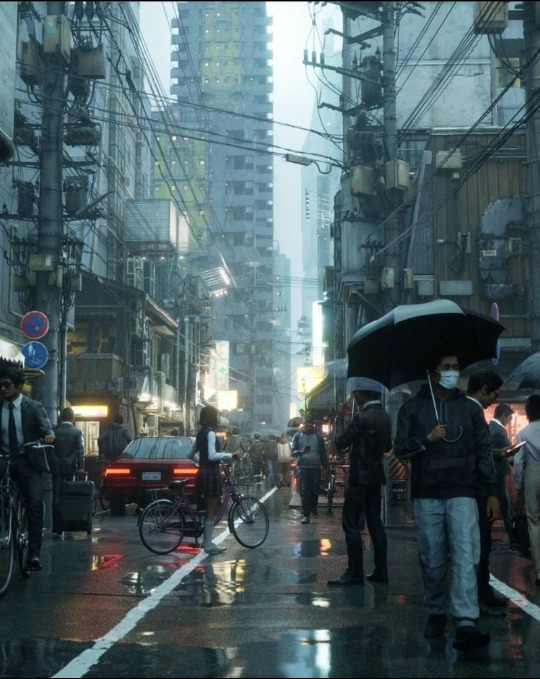
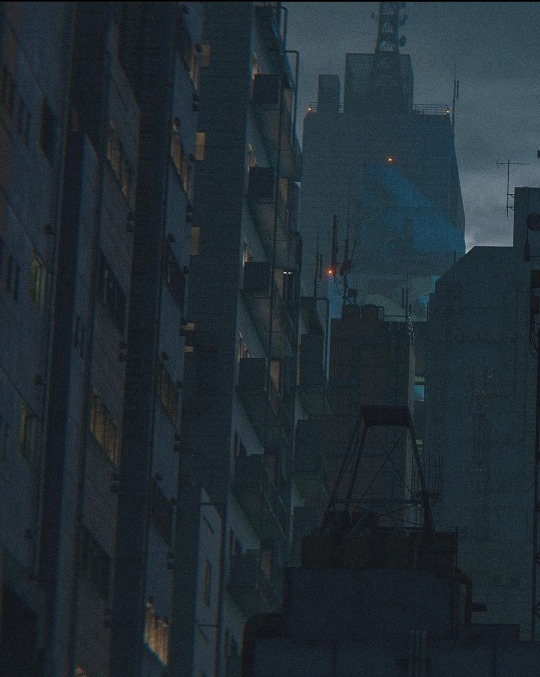





By Yoshimura Mike
#nestedneons#cyberpunk#cyberpunk art#cyberpunk aesthetic#cyberpunk artist#art#cyberwave#megacity#futuristic city#rainy#tokyo#neo tokyo#urban#brutalism#brutalist architecture#brutalist
877 notes
·
View notes
Text
ARCHITECTURE STUDY : CYBERPUNK 2077

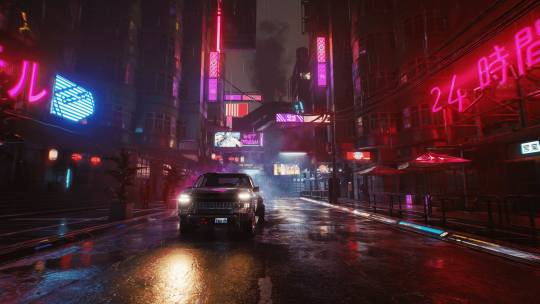
Cyberpunk architecture is a sub-genre of architecture the draws inspiration from the futuristic, dystopian settings found in cyberpunk literature and movies. It is often identified by a blend of futuristic, high tech design and gritty industrial features. The architecture draws heavily from the architecture of the 20th century—primarily the Brutalist movement. The Brutalist movement is a style that developed in the 1950s in the United Kingdom post World War II. There is a distinct emphasis on materials, textures, and construction. Cyberpunk architecture makes use of the Brutalist movement’s concrete, steel and glass concepts in a natural and unpolished manner. Yet, it manages to add high-tech elements such as holographic projections, neon lights, digital displays, etc. In the case of Cyberpunk 2077’S Night City a sprawling metropolis with large skyscrapers and mega-buildings create the beautiful skyline, yet the city is an evident mix of old and new—run down buildings manage to co-exist with high-tech structures. Night City uses a lot of references to L.A, Detroit, Tokyo, and Hong Kong, however they primarily worked on from a clean slate. Urban Design experts were involved in the process to ensure that Night City looks credible—moving as a real city.
Night City wants to make you feel small and meaningless. The higher the building the more dominant it is. What happens behind the building is of little importance. That is why you get slum like areas even in the more central locations. Although there are obviously some things that could have been done about it, it seems that Night City was not built as a Theme Park. The image of the city, or how the inhabitants see it seems of little importance. Night City is a living, breathing metaphor. It is what you get when ambition, violence and overpopulation are the core foundation of the world you are building. Everybody wants a piece of the pie even if there is not enough for everybody. There are four varieties of stylistic identity used in the construction of the game: Entropism, Kitsch, Neo-Militarism, and Neo-Kitsch:
Entropism: Necessity over style. Buildings created in this style are old, grey and decrepit and are will often be found in areas where people cannot afford to modernize with the rest of society. Entropism, is a style based on poverty and a severe lack of resources. In a nutshell, this style visually tells the story of the very poor social layer of our world.
Kitsch: Style over Substance. Counter-Cultural movement against the austerity of the old days; an expression of happiness an d recovered. Bold colors, bright plastic and accessibility. Kitsch describes a slightly richer social layer of our world. Members of this social class would use some cyberware just to look amazing and grab attention. Architecture here would also be very attractive, with a lot of vibrant colors, a lot of shiny materials like plastic or good fabrics.
Neo-Militarism: Substance over style. Separated from the austerity of Entropism by its sleek and domineering aesthetic. It’s power dressing and has an air of luxury. A deadly layers of elegance and corporate, militaristic fashion. Associated with mega-corporations. Neomilitarism is very minimalistic, very rich, and very sleek.
Neo-Kitsch: Style and substance. Holds similarity to Kitsch however it lacks semblance to the movement its predecessor aligned with. This is the youngest style in Night City but also a style only for the richest of the rich. People so rich you cannot even begin to imagine what you would do with all the money that they have. It uses only the most expensive materials in our universe like wood, gold, real animal leather and very unique but slick architecture design.
ARCHITECTS BENJAMIN BALL AND ALEX READINGER'S REVIEW OF NIGHT CITY IN CYBERPUNK 2077
Do you think it is realistic, what it would be like in 2070?:
Benjamin Ball: “I think cities are going to become more and more dense. We are going to be more packed in close to infrastructure. Old zoning rules will not apply. We will have to build closer and higher—we will have to build closer to freeways. People will have less personal space. There will be more, and more, runaway capitalism…Yeah maybe this [Night City] is a good take on what 2077 would look like...Hyper dense, very vertical places. “A lot of signage take on a lot of visage on the buildings.”
How sustainable do you think the city will be?
Alex Readinger: “It doesn’t look sustainable at all. There are wall-mounted exterior air conditioner units. This particular cyberpunk version has this ‘Bladerunner’ neon, whereas my version of the future would be powered by algae.”
Benjamin Ball: “Hard to say. Out environments would be synthetic—will be manufactured….Climate will have changed. It will be like living in a machine. Is that sustainable? I don’t know…We would be a lot more solar, a lot more nuclear, and a lot more hydrogen. Who knows?
Cyberpunk 2077 captures a lens of the world that encapsulates the future not just architecturally, but also sonically, politically, and in every single way.
Alex Readinger: “What is frightening is that it feels like a world without relief. Endless sex shops, neon—no end to the noir experience.”
Benjamin Ball: “Endless trail. Endless maze. There is no break from the commercialism of it. Nothing comes out as sacred. There is no nature—it is all about consumption and desire. It’s relentless and it’s where we are headed.”
When you get to the columbarium—even death has be industrialized. “Step up as a uniform and non-personal gridded space with a digital readout. Even spaces that could be sacred was specifically designed not to be.” (Alex Readinger)
PROJECT: HOW/WHY IS IT APPLICABLE?
I plan to recreate chosen locations in Louisville while staying true to architectural design choices that have been used to create Cyberpunk 2077’s Night City. Since cities do not have to be recreated to have a Cyberpunk feel. All a city needs to go through is layers and layers of add-ons while keeping everything in the past. So I will do that exact thing with Louisville. Staying true to our local history while adding a bit of the fictional narratives associated with the Cyberpunk 2077 universe. For example, the downtown builds may depict Humana or the PNC Bank as a “mega-corporation” that domineers over all. Additionally, I will apply the concepts of brutalism into my builds as well.
SOURCES
https://youtu.be/HnlaJFf7mC8?si=2PuUSZLs6lAAJUhl
https://www.domusweb.it/en/architecture/gallery/2020/12/21/night-city-how-the-cyberpunk-2077s-megalopolis-was-built.html
https://iuliu-cosmin-oniscu.medium.com/a-brief-look-at-cyberpunk-2077-city-design-night-city-66b54f686b66
https://www.architecturaldigest.com/story/inside-the-design-of-cyberpunk-2077s-urban-dystopia
https://www.architecturaldigest.com/story/brutalist-architecture-101
https://cyberpunk.fandom.com/wiki/Neokitsch
https://cyberpunk.fandom.com/wiki/Neomilitarism
https://cyberpunk.fandom.com/wiki/Kitsch
https://cyberpunk.fandom.com/wiki/Entropism
24 notes
·
View notes
Text

0 notes
Video
youtube
Charles Deaton.avi
#youtube#architecture#modern architecture#mid century modern#mid century modern architecture#futurism#neo futurism#futurist architecture#charles deaton
2 notes
·
View notes